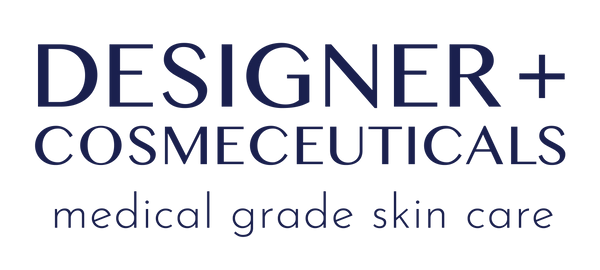Exfoliation: Exfoliation is simply the process of removing dead skin cells from the uppermost layer(s) of the skin. We can do this physically through dermaplaning or chemically through applying active ingredients such as Alpha or Beta Hydroxy acids for immediate exfoliation, or more of a long chemical “peel” type process using retinoids.
Skin Barrier: The skin barrier can be defined in terms of function and structure. The skin barrier acts to protect our bodies from the environment, as well as keep our bodies hydrated.
The skin barrier’s structure is made of skin cells called corneocytes in the epidermis held together by the phospholipid bilayer which contains ceramides, cholesterol, and fatty acids. I’m sure you recognize many of those as common skincare ingredients!

Retinoids - The term retinoid describes a class of compounds that are derivatives of Vitamin A. Retinoids are potent anti-agers. They benefit the skin by exfoliation, reduction in sebum, and improving collagen density. All this means they improve fine lines and wrinkles and unclog pores, thereby, improving acne as well. What’s left is skin with improved elasticity, tone, and clarity.
Antioxidant: Environmental stressors like pollution, toxins, ultraviolet radiation, etc. do their damage largely by oxidation of lipids. Essentially, you can imagine these stressors causing chemicals to turn into reactive oxygen species having an extra electron ready to wreak havoc on DNA, including DNA of the skin.
We want to “mop up” these free radicals caused by oxidation, and the mops are antioxidants. Antioxidants are able to chemically absorb or neutralize this reactive electron thereby protecting your DNA from environmental stressors.

Peptides: Peptides are small chains of amino acids. Larger chains of amino acids are called proteins. Peptides can bind to receptors in the body, in this case in the skin, and this peptide/receptor complex causes an action. Examples of the actions caused by peptides binding to receptors are increasing collagen production, reduction of neurotransmitters that cause skin wrinkling, and reducing the production of enzymes that degrade collagen.
Collagen: So, what exactly is collagen? Collagen in a protein. It comprises three-fourths of your skin, and one-third of your body. It is not only in skin, but also in muscle, bone, cartilage, and more. Collagen in the skin, along with its sister protein elastin, are contained in the skin’s dermis, and are responsible for the structural integrity of the skin, or firmness and elasticity.

Hydroxy Acids: There are a few types of hydroxy acids, and the two most well-known are alpha hydroxy acids (AHAs) and beta hydroxy acids (BHAs) (there is a new class called poly hydroxy acids as well.)
The difference between alpha and beta starts with chemical nomenclature, regarding the placement of two acid groups in relation to one another, and this placement is in either in the alpha or beta position on the molecule. In practice, most AHA’s are lower in molecular weight and more water soluble, and therefore act on a more surface level to exfoliate. BHAs tend to have a higher molecular weight, and to chemically be more lipid soluble, which allows them to penetrate pores more deeply.
AHAs will reveal fresher, brighter more radiant skin. BHAs are known for their ability to clear pores and help with exfoliation and acne.

